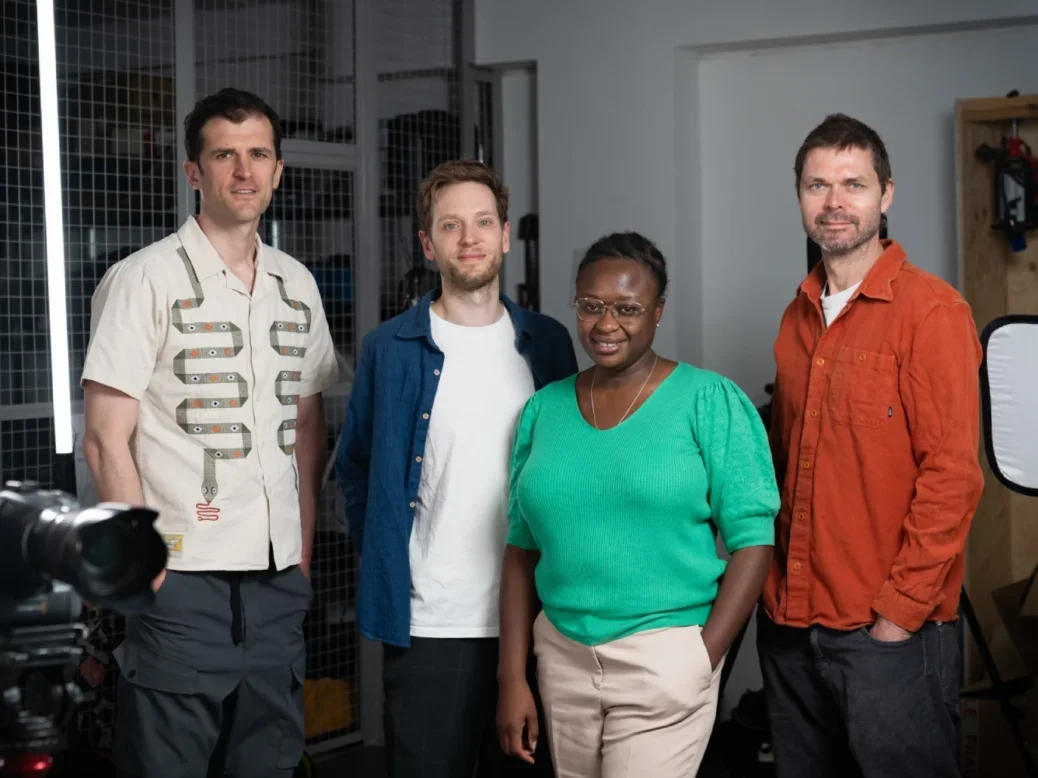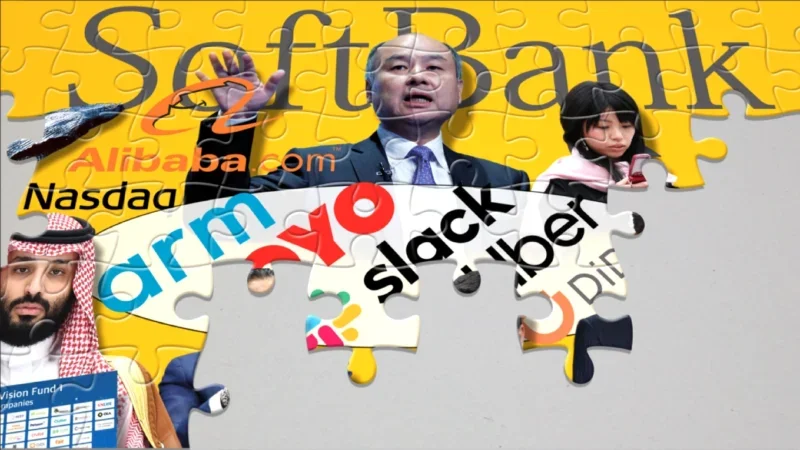
The Financial Times is seeing “steady growth” in video viewership with a long-form strategy aiming to engage subscribers but find new audiences on Youtube too.
The FT cited internal data that shows those who visit its website and app regularly are 20 times more likely to watch FT films than those who are less engaged.
Viewership of FT videos on its website was up 10% last year compared to 2023.
FT’s 30-minute films include an explainer on “Why governments are ‘addicted’ to debt”, “Nvidia’s rise in the age of AI” and an investigation into a rise in Russian soldiers executing Ukrainian prisoners of war.
An investigation into a major corruption scandal in South Africa was highly commended in Press Gazette’s Future of Media Awards in September.
Global head of video Veronica Kan-Dapaah told Press Gazette the “guiding principle” of video at the FT is adding value for subscribers and “offering either new stories or new insights in video first”.
This is an evolution from when the strategy started around five years ago, and initially focused on videos that took stock of a major story and explored how it had evolved with new analysis and hindsight.
There is now a bigger emphasis on original storytelling and investigations.
Kan-Dapaah added that video is “no longer a kind of bell or whistle to make an essentially print story have the appearance of being digital.
“Everything I do has to add value to what we have on the site. It shouldn’t just be the same material in a different format.” The FT puts out shorter videos too but Kan-Dapaah’s priority is the long-form projects.
Kan-Dapaah cited an FT Film published in December 2023 about Joe Biden’s Inflation Reduction Act, directed by Daniel Garrahan, as a good example of making an issue “compelling for people that may not have thought that they were particularly interested in this”.
The film has 1.7 million views on Youtube and won a Association for International Broadcasting award last year in the International Affairs Documentary category.
“Using the FT.com subscriber as our cue means that we are able to have a very specific kind of voice and personality that differentiates us from some other publishers who try to appeal to much broader audiences.”
Sometimes although an idea makes a great story, it’s not right for this type of video: “It’s just whether or not we have somebody available to start on it now and get it while the story is relatively hot. Or sometimes the stories are too hot… because we don’t want to be trying to catch falling knives, right?
“So there’s no point, for example, now somebody coming and saying, I don’t know, we want to look at the impact of Republican policies on the bond market because we would be hostage to Trump’s ever-changing mind.”
A team of eight producer-reporters work on FT Films along with a regular producer-director. They tend to spend at least three months on a film and sometimes as long as a year.
“My team are able to identify a story, pursue a story, then plan out the production,” Kan-Dapaah said. “Many of them are very skilled in camera work, some of them very much so. They can all interview, they can present if needed to. And then I think very importantly, they are all what I would call craft editors, like very skilled video editors. So they will usually do the first edit themselves.”
The only external involvement, usually, is if professional colour correction is needed.
“It’s quite a different process than television or even some other print organisations, in that the producers completely own their pieces.”
The team also has a motion graphics designer who, Kan-Dapaah said, gives FT Films their “signature feel” and makes looking at data more “compelling and memorable”.
After being given a brief about a film by its producer, Russell Birkett creates a relevant motif that runs through many of the videos: for example puzzle pieces that slowly slot together, or a fairytale book that flips through the pages for a piece about Disney. It is not an easy job to recruit for, Kan-Dapaah revealed.

“We have searched in vain for somebody with a similar skill set but he started here over 20 years ago, first just as part of the graphics team and it’s just really hard to find somebody with enough education in data and statistics, as well as being a highly-skilled animator.”
Video on FT.com vs Youtube
FT Films are put on its website outside of the paywall and are also free on Youtube, where the account is bolstered by a mix of shorter videos including interviews and analysis with similar themes and subjects – helping the account build up its legitimacy signals to the platform’s algorithm.
Kan-Dapaah said the average Youtube watch time was about five minutes and 11 seconds in 2023, rising to six minutes and 43 seconds last year. “Being able to hold onto a viewer for almost seven minutes is pretty powerful for us.”
Total Youtube views went from about 18 million to almost 24 million with “steady growth” over the past five years.
The films are always designed with the FT.com audience and subscriber in mind. But, Kan-Dapaah said, Youtube has taught them to “make sure that we have really tight storytelling, really imaginative storytelling… so that it’s able to capture a much broader audience who might not be quite as read up on the content, but we just kind of pull them in and give them an exciting narrative.
“So it’s a really interesting relationship in that I think FT.com tells us, possibly, what stories we should be thinking about and then Youtube has taught us how we should be telling them.”
The top performers on each are quite different: on FT.com “taking stories apart the audiences are already aware of has a lot of value”, Kan-Dapaah said, giving the example of videos about why the far-right is surging in Europe and the women who voted for Trump. On Youtube core FT topics tend to do best.
Kan-Dapaah added that what “works for YouTube is finding a voice and a model that works for you and more or less sticking to that” and that long-form documentaries worked better than short-form or reactive content, with the algorithm promoting videos that are 15 minutes or longer.
Asked whether putting the films out for free on Youtube conflicted with the FT’s subscriptions strategy, Kan-Dapaah said she has “never got the sense that there was sort of any cannibalisation or any feeling it’s of less value to the subscribers”.
She said 93% of C-suite respondents to a reader survey watch on FT.com or the FT app and not Youtube: “the vast majority watch because… you want to be on FT.com and you don’t want to feel like you have to leave to get more texture.”

FT Films are published approximately once a month but they don’t feel the need to keep to an exact schedule.
Kan-Dapaah noted that FT subscribers are not going to be watching this type of video every day: “75% of them have watched a video, and I think 41% watch monthly. So a six-week wait is not much of an ask to them. There’s lots of other things on the site.”
Measuring success can be tricky because many of the videos have a massive long tail and continue getting views long after they are published.
“Some videos might immediately look very successful in terms of the number of views,” Kan-Dapaah said. “Some videos might look modestly successful, and then you look back at them, like, a year, two years later, and they’re suddenly a big hit.” She cited for example a 2021 film about music festivals being a “high-risk business” which now has 1.1 million views on Youtube.
Youtube can see huge numbers quickly but on the FT’s own platforms videos tend to see a “gentle gradient” that can end up in substantial viewership over the course of a year, she added.
Another measure of success can be award recognition, which Kan-Dapaah said is particularly gratifying because the high production quality of the films means it is often competing against traditional broadcasters.
“We may not be able to provide the very varied picture narratives within a piece that a huge organisation like the BBC might be able to, but we absolutely make sure that there’s a visual richness and that it’s incredibly well executed, and that we shoot in the highest quality, and that our pieces are properly colour corrected, proper sound mix on everything, which means that we are able to put our work forward in these categories that are oftentimes dominated by broadcasters.”
FT videos for subscribers, not advertisers
The emphasis on subscribers is demonstrated by the fact that very few of the FT Films carry any advertising, either on the website or on Youtube. Kan-Dapaah said that sometimes an advertiser has bought space around a particular subject area that might overlap with a video and therefore be a natural fit.
“The films are not designed, or even the most attractive content, for an advertiser because it tends to be looking at something quite controversial. So it really, really is about providing valuable content to FT.com subscribers. The subscription is a premium one and we want to give them as much richness as we can.”
Meanwhile on Youtube, she added, most viewers will not be the core ones that advertisers are looking to target anyway.
The FT team has been able to experiment in a cost effective way having moved away from broadcast standard cameras to consumer technology like Osmos and GoPros.
“Everything’s changed so much because there’s now the whole industry based around content creators, which has just spurred so much innovation in terms of capturing imagery, the possibilities are really great.
“And sometimes I think because we are more constrained financially and because maybe we don’t have so much legacy technology, we probably are a little bit more plugged into that kind of content creator technology end of picture acquisition than some of the bigger broadcasters and whatnot. So that brings a lot of efficiencies and cost savings and it it means that you can produce content that looks vastly more expensive than it actually is sometimes.”
Although consumers are used to more casual videos due to the visual language on Tiktok and Instagram, the FT’s video output still needs a high level of quality to fit the FT’s “gravitas and authority: I think people expect you to turn up with a certain level of formality,” Kan-Dapaah said.
“Because it just wouldn’t be authentic for the FT, I don’t think personally, to be shooting on the type of budget that you would expect of a teenager talking to their peers. I think that I would like to show a high level of respect to the viewers and show that we take them seriously, and we’re as invested in consumers of video content, as we are in consumers of print.”
Email pged@pressgazette.co.uk to point out mistakes, provide story tips or send in a letter for publication on our "Letters Page" blog

